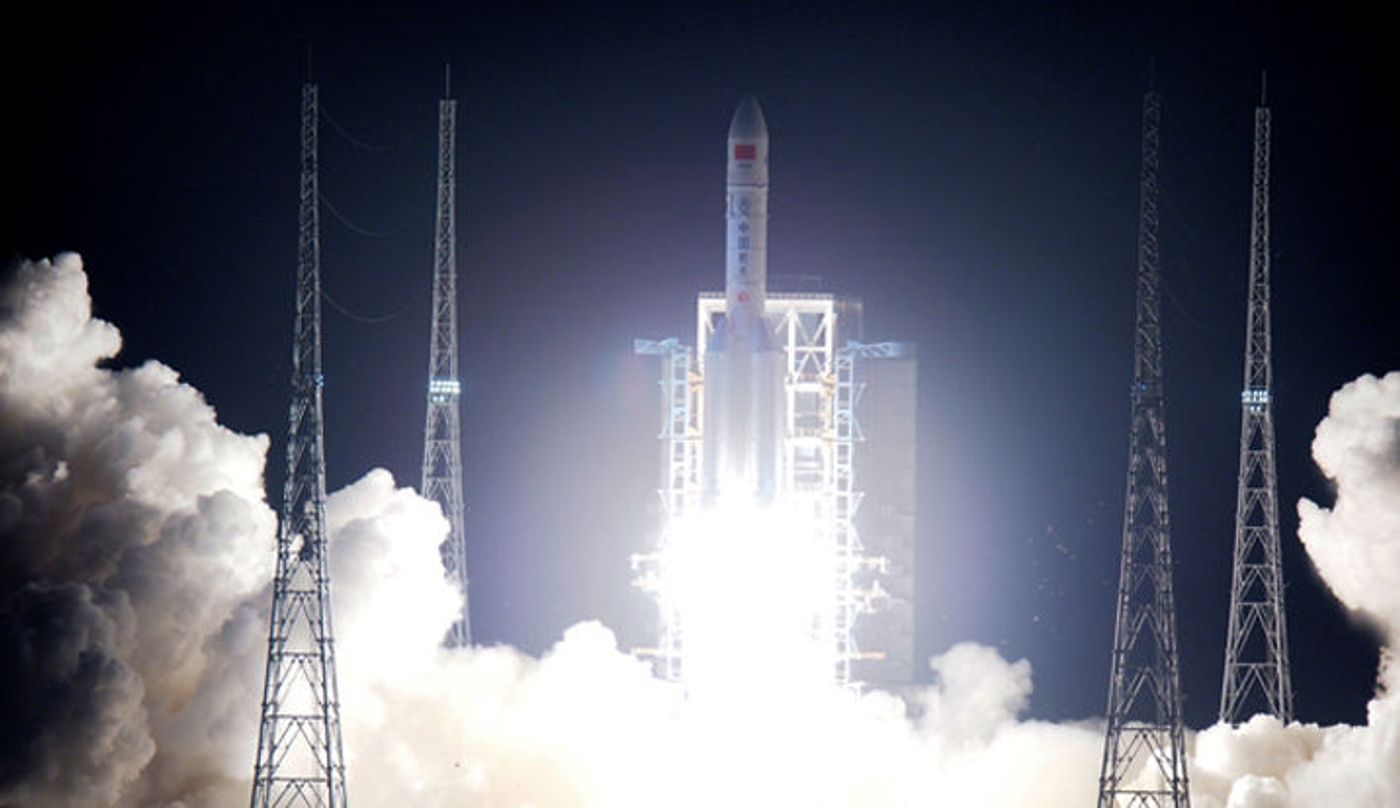China's Heavy-Lifting Long March 5 Rocket Launches for the First Time
China successfully conducted the maiden flight of its Long March 5 rocket this month, which is a heavy-lifting type of rocket designed for taking objects up to 26 tons into low Earth orbit (LEO) or 15 tons into geostationary orbit.

Image Credit: China Aerospace Science and Technology Corporation
This geostationary orbit rating is perfect for helping China to advance the construction of its upcoming Tiangong-3 space station, which won’t be quite as big as the International Space Station, but will still be relatively large compared to other previous China-only space stations. Operations at said space station are expected to begin sometime in 2022.
Comparing Long March 5 to United States’ rocket technology, the SpaceX Falcon 9, which has been used on several International Space Station resupply missions, can carry 22 tons into LEO, but an upcoming Falcon Heavy rocket will boost that number up to 54 tons.
The Long March 5 is China's tallest ever rocket, standing a full 57 meters tall. It launched from the Wenchang launch center on Hainan Island at approximately 8:43 A.M. EDT on November 3rd.
According to Chinese news agencies, very little is known about what kind of payload was on the new Long March 5 rocket, but speculation seems to pointing in the direction of experimental electric propulsion spacecraft.
These kinds of spacecraft would be perfect for traveling to the Moon or even Mars because it works for a long time and can accelerate to high rates of speed while in space. Many nations are experimenting with this kind of propulsion, including the United States, and one of the most recent examples to be featured is an Ion Drive engine created by Dr Patrick Neumann.
One can only speculate on what the rocket may have been carrying, but the bigger picture here is that China is advancing their rocket technology just like the rest of the world so they can send larger things into space. China’s space agency, as usual, operates in a secretive manner and doesn’t share many details with the rest of the world.
The launch served primarily as a test launch to ensure that the rocket could safely get itself into space without any problems. Following a series of additional test flights, China may deem the rocket stable enough for future space missions.
A video of the rocket launch is available to watch below:
Source: Space.com








